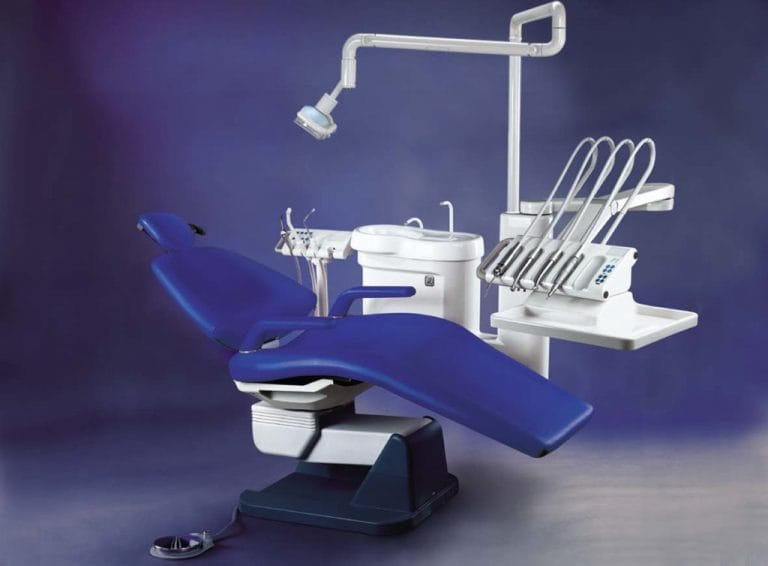Have you ever felt self-conscious about your smile due to chipped teeth, gaps, or stubborn discoloration? If so, you are not alone. Many individuals struggle with dental imperfections that can affect their confidence and social interactions. Fortunately, dental bonding may be the solution you’ve been searching for. This comprehensive review explores the transformative power of dental bonding, detailing its benefits, costs, and long-term impact on your smile and overall well-being.
In this article, we will delve into the intricacies of dental bonding, compare it with other cosmetic procedures, and provide insights into what you can expect from the process. By the end of this review, you will have a thorough understanding of how dental bonding can enhance your smile and boost your self-esteem.
Understanding Dental Bonding
Dental bonding is a popular cosmetic dentistry procedure that involves applying a tooth-colored resin material to your teeth. This resin is then hardened using a special light, effectively “bonding” it to the tooth surface. The result is an improved appearance of the teeth that can also enhance their function in certain cases.
Types of Dental Bonding
There are two primary types of dental bonding:
Direct Composite Bonding: This method involves applying the resin directly to the tooth in a single visit. It is ideal for minor repairs and aesthetic improvements.
Indirect Composite Bonding: In this technique, a custom-made restoration is created in a lab and then bonded to the tooth. This method is often used for larger restorations or more complex cases.
Modern advancements in dental materials and techniques have significantly improved the effectiveness and natural appearance of dental bonding, making it an attractive option for many patients.
The Dental Bonding Process
The dental bonding process is straightforward and typically takes 30 to 60 minutes per tooth. Here’s what you can expect during your appointment:
Preparation: Your dentist will clean and roughen the surface of the tooth to ensure proper adhesion.
Color Matching: A shade guide is used to select a resin color that closely matches your natural teeth for a seamless look.
Application: The resin is carefully applied and molded to achieve the desired shape and contour.
Curing: A special light hardens the resin, securely bonding it to your tooth.
Finishing Touches: Your dentist will trim, shape, and polish the bonded tooth for a natural appearance.
This entire process is usually pain-free and does not require anesthesia unless significant alterations are made.

Benefits of Dental Bonding
Aesthetic Improvements
Dental bonding offers numerous aesthetic benefits:
Repairs Chipped or Cracked Teeth: Restore your smile by fixing minor imperfections.
Closes Gaps Between Teeth: Achieve a more uniform appearance by eliminating unsightly gaps.
Improves Discolored Teeth: Brighten your smile by covering stains or discoloration.
Alters Tooth Shape: Reshape teeth that may be uneven or misshapen for a more harmonious look.
Functional Benefits
In addition to aesthetic enhancements, dental bonding can provide functional advantages:
Protects Exposed Tooth Roots: Ideal for patients with receding gums, as it shields sensitive areas from temperature changes and decay.
Alternative to Amalgam Fillings: For those seeking a more aesthetic solution for cavities, dental bonding provides an effective alternative without compromising appearance.
Psychological Impact
The psychological benefits of dental bonding can be profound. Many patients report feeling significantly more confident after their procedure. Improved aesthetics often lead to enhanced self-esteem, allowing individuals to engage more freely in social interactions without fear of judgment regarding their smile.
Case Study: Sarah’s Smile Transformation
To illustrate the impact of dental bonding, consider Sarah, a 32-year-old teacher who had always been self-conscious about the gap between her front teeth. After undergoing dental bonding, she shared her experience:
“I can’t believe the difference it’s made! Not only does my smile look great, but I feel so much more confident in front of my students. It’s changed how I interact with everyone!”
Sarah’s story exemplifies how dental bonding can transform not just smiles but lives as well.
Comparing Dental Bonding to Other Cosmetic Procedures
When considering cosmetic options for enhancing your smile, it’s essential to compare dental bonding with other popular procedures such as veneers and crowns. Below is a comparison table highlighting key aspects:
| Aspect | Dental Bonding | Veneers | Crowns |
|---|---|---|---|
| Procedure Time | 30-60 minutes per tooth | 2-3 visits | 2-3 visits |
| Durability | 3-10 years | 10-15 years | 15+ years |
| Cost | $300-$600 per tooth | $925-$2,500 per tooth | $1,000-$3,500 per tooth |
| Invasiveness | Minimal | Moderate | High |
| Reversibility | Yes | No | No |
| Stain Resistance | Moderate | High | High |
Dr. Emily Chen, a renowned cosmetic dentist, notes: “Dental bonding is an excellent option for patients seeking a quick, affordable solution for minor cosmetic issues. It’s particularly suitable for young adults or those testing out changes before committing to more permanent solutions.”
Cost Considerations
The cost of dental bonding typically ranges from $300 to $600 per tooth; however, prices can vary based on several factors:
Geographic Location: Costs may differ depending on where you live.
Dentist’s Expertise: More experienced dentists may charge higher fees due to their skills and reputation.
Extent of the Procedure: More extensive work requiring additional materials or time will naturally increase costs.
Many dental insurance plans cover bonding when performed for structural reasons or cavity fillings; however, purely cosmetic procedures may not be covered. Always check with your insurance provider beforehand to understand your coverage options.
Cost Comparison Table
| Procedure Type | Average Cost |
|---|---|
| Dental Bonding | $300-$600 per tooth |
| Veneers | $925-$2,500 per tooth |
| Crowns | $1,000-$3,500 per tooth |
Aftercare and Maintenance
To ensure the longevity of your dental bonding results:
Practice Excellent Oral Hygiene: Brush twice daily and floss regularly to keep your mouth healthy.
Avoid Biting Hard Objects: Refrain from habits like nail-biting or chewing on ice that could damage bonded teeth.
Limit Staining Substances: Be cautious with foods and drinks known to stain teeth (e.g., coffee, tea, red wine).
Schedule Regular Dental Check-ups: Routine visits allow your dentist to monitor the condition of your bonded teeth and address any issues early on.
With proper care, dental bonding can last between 3 to 10 years before needing touch-ups or replacements. A recent study published in the Journal of Conservative Dentistry found that 87% of patients were satisfied with their dental bonding results even after five years due to improved aesthetics and minimal complications.
Potential Risks and Side Effects
While dental bonding is generally safe when performed by qualified professionals, it’s essential to be aware of potential issues:
Chipping or Breaking: The resin can chip if subjected to excessive force (e.g., biting hard foods).
Staining Over Time: The material may stain if exposed frequently to tobacco products or staining foods/drinks.
Sensitivity: Some patients experience temporary sensitivity to hot or cold temperatures after receiving dental bonding.
These risks can be minimized by following proper aftercare instructions and maintaining good oral hygiene practices.
Next Steps: Is Dental Bonding Right for You?
If you’re considering dental bonding as an option for enhancing your smile:
Consult a Cosmetic Dentist: Schedule an appointment with a qualified dentist who specializes in cosmetic procedures. They will assess your specific needs and determine if you’re a good candidate for bonding.
Prepare Questions: Come prepared with questions about the procedure itself—its costs, expected outcomes, potential risks—and any concerns you might have regarding your oral health.
Check Insurance Coverage: Contact your insurance provider beforehand to clarify what costs might be covered under your plan.
Consider Timing for Other Treatments: If you’re planning on whitening your teeth in conjunction with getting dental bonding done, it’s best to complete whitening first for optimal results.
Conclusion
Dental bonding offers a powerful solution for transforming your smile while boosting your confidence at an accessible price point. With its ability to correct imperfections like chips or gaps while enhancing color and overall aesthetics, it’s an excellent choice for many individuals seeking a revitalized smile.
However, every smile is unique; therefore consulting with a qualified cosmetic dentist is crucial for personalized advice tailored specifically to your needs. They can help you determine if dental bonding is indeed the right choice for your smile makeover journey.
Take that first step towards achieving a radiant smile—schedule a consultation with your dentist today and explore all that dental bonding has to offer!






